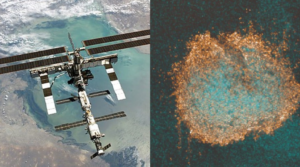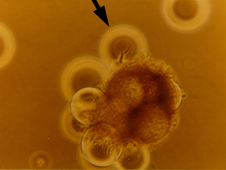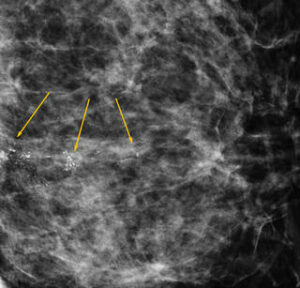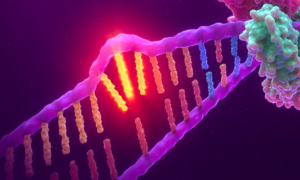Pioneering Breakthroughs in Space Science
NASA Contributions to Cancer Research
Space exploration and cancer research might seem like two disparate fields, but NASA’s contributions to the fight against cancer have been significant and far-reaching. Through cutting-edge technology, advanced research methods, and a relentless pursuit of knowledge, NASA has made ground-breaking discoveries that have aided in cancer research and transformed our understanding of the disease.
This article explores the ways in which NASA has enabled and helped advance cancer research, showcasing the symbiotic relationship between space science and medical innovation.
Cellular Biology and Microgravity Research

NASA’s foray into microgravity research has proven invaluable in understanding the fundamental mechanisms of cancer at the cellular level. The weightless environment of space provides a unique platform for investigating cell behavior without the confounding influence of gravity. NASA’s experiments have shed light on the effects of microgravity on cell growth, differentiation, and gene expression, offering crucial insights into cancer development and progression.
Utilising microgravity conditions on the International Space Station, a pioneering UK research project to study the three-dimensional spread of cancer cells is set to take place. The D(MG)2 study sets out to create much larger 3D structures of cancer cells than can easily be created on Earth.
Professor Chris Jones, leader of the D(MG)2 study and Professor of Childhood Cancer Biology at The Institute of Cancer Research, London, said:
“Experiments such as D(MG)2 aboard the International Space Station will improve our understanding of how cancer cells interact with each other within three-dimensional structures, and hopefully lead to new ideas for disrupting tumour growth that we can take forward back in the lab.”
Researchers will send samples of a childhood cancer called diffuse midline glioma (DIPG) to the International Space Station to gain better understanding of the development of the disease.
Tissue Engineering
To overcome the limitations of conducting experiments solely in space, NASA has pioneered tissue engineering and organ-on-a-chip technologies. These innovative approaches involve growing cells and tissues in a controlled microfluidic environment that mimics the human body’s conditions.

Photo courtesy of NASA Spinoff
NASA’s advancements in tissue engineering have helped researchers create realistic cancer models for drug testing and personalized medicine, enhancing the accuracy and efficiency of cancer treatment strategies.
“We have a very powerful set of tools to make the next set of innovations and contributions to future medical science.” Said, David Wolf, astronaut and co-inventor of the NASA bioreactor.
Bioreactors are driving advances in tissue engineering. Developed in 1986 by NASA engineers and researchers at the agency’s Johnson Space Center in Houston, the device, known as the bioreactor, enables the growth of tissue, cancer tumors and virus cultures outside the body in space and on Earth. Find out more here.
In 1990, Anderson and Schwarz licensed patents for the rotating-wall bioreactor technology and founded Synthecon Inc. to commercialize the device.
“Synthecon provided the bioreactors for these studies, and the results—success growing different tissue types, as well as tumor models for testing cancer treatments outside the body—led to numerous published findings that added relevance to the technology.” Said, Anderson.
Imaging Technology and Early Detection
NASA has played a pivotal role in developing advanced imaging technologies that aid in early cancer detection. The agency’s expertise in remote sensing and satellite imaging has been leveraged to develop sophisticated imaging systems, such as multispectral imaging and hyperspectral analysis. These techniques have proven invaluable in identifying early signs of cancer, monitoring tumor growth, and assessing treatment effectiveness.
- Digital signal processing was pioneered at NASA for use during the Apollo Lunar landings to computer-enhance pictures of the Moon. This technology was used in a broad range of Earthbound medical and diagnostic tools, including advanced body imaging techniques known as CT, CAT Scan and Magnetic Resonance Imaging (MRI).’ Find out more in NASA’s Press Release.

- Charge-coupled devices (CCDs) used in the Hubble Space Telescope to convert a distant star’s light into digital images have been adapted to improve detection of small masses in breast tissue.
‘When applied to mammograms, software techniques developed to increase the dynamic range and spatial resolution of Hubble’s initially blurry images allowed doctors to spot smaller calcifications than they could before, leading to earlier detection and treatment. The sooner the cancer is found and treated, the better the chances are that a patient will make a full recovery.’ Said, Rob Garner, here.
Additionally, finding the exact location allows doctors to analyze the tissue by stereotactic biopsy, which requires a needle rather than surgery. Find out more here.
- Furthermore, the BioScan System, developed by OmniCorder Technologies, Inc. at NASA’s Jet Propulsion Laboratory, is able to locate cancerous lesions by detecting the cancer’s ability to recruit a new blood supply. A digital sensor detects infrared energy emitted from the body and identifies the minute differences accompanying the blood flow changes associated with cancerous cells. It also has potential use as a monitoring device during cancer treatment. Find further details here. This technology will reduce the time taken to detect cancerous cells and allow for earlier intervention.
Robotics and Minimally Invasive Surgery

Credits: Jason Stang
NASA’s robotics technology has revolutionized surgical procedures, including cancer-related surgeries. The agency’s advancements in robotic systems for space exploration have directly influenced the development of robotic surgical tools used in minimally invasive procedures. These tools offer enhanced precision, dexterity, and maneuverability, allowing surgeons to perform complex cancer surgeries with reduced invasiveness, shorter recovery times, and improved patient outcomes.
The robot developed by NASA was the first one used in a theatre, where it was used for needle placement in a CT-guided brain biopsy. Over the years, robotic surgical systems have evolved to become more advanced and sophisticated, with new features such as 3D imaging, haptic feedback, and artificial intelligence.
Some common examples of robotic surgery procedures include Prostatectomy, Hysterectomy or Colorectal surgery – find out more here.
The neuroArm surgical tool for treatment of brain tumors found its origins in space station technology. NeuroArm is a tremor-free aid for surgeons, offering a high-level of dexterity and even giving doctors a sense of touch while performing delicate procedures. Read more on this here.
Radiation Protection and Cancer Treatment
DID YOU KNOW…
Astronauts who spend six months in space are exposed to roughly the same amount of radiation as 1,000 chest X-rays.
Space missions expose astronauts to high levels of radiation, leading NASA to invest significantly in radiation protection research. The insights gained from studying the effects of radiation on astronauts have had direct applications in cancer treatment. NASA’s research has contributed to the development of innovative radiation shielding materials, delivery techniques, and precision radiation therapy methods, minimizing collateral damage to healthy tissues during cancer treatment.
Cancer is a leading cause of death among Americans as well as a long-term risk for astronauts due to space radiation exposure.
“Scientists at NASA have been studying cancer for decades, focusing on understanding risks to astronauts,” said NASA Administrator Bill Nelson.

A 2002 research study funded by NASA’s Office of Biological and Physical Research explored the possibility that specific sections of DNA, called microsatellites, might accurately record radiation damage over time.
Identifying the type of a cancer tumor can help doctors choose the best treatment. OncoMate MSI Dx Analysis System, developed by Promega, uses the results of NASA-funded research to find changes in DNA like those shown in this illustration to begin the diagnostic process.
‘The research showed that as the dose of radiation went up, the mutation frequencies in these parts of DNA also went up’, Said Jeff Bacher, senior scientist with Fitchburg, Wisconsin-based Promega Corporation, who led the NASA-funded study at the Brookhaven National Laboratory, which consisted of exposing human cells to radiation.
Two decades later, fundamental science supports a diagnostic test to improve cancer treatment on Earth, called the OncoMate MSI Dx Analysis System.
Data Sharing and Collaboration
NASA’s commitment to open data sharing and collaboration has fostered interdisciplinary research and accelerated progress in cancer research. The agency’s vast repositories of space and Earth science data, combined with its commitment to promoting scientific collaboration, have facilitated the analysis of complex biological processes and the identification of potential cancer biomarkers, paving the way for new diagnostic tools and therapeutic targets.
NASA’s contributions to cancer research are a testament to the transformative power of space science and technology in advancing medical innovation.
By leveraging its expertise in microgravity research, tissue engineering, imaging technology, robotics, radiation protection, and data sharing, NASA has enabled groundbreaking discoveries and paved the way for novel approaches to cancer prevention, detection, and treatment. As space exploration continues to push the boundaries of human knowledge, the invaluable lessons learned from NASA’s endeavors will continue to shape and revolutionize cancer research, offering hope for improved cancer therapies and ultimately a world free from this devastating disease.